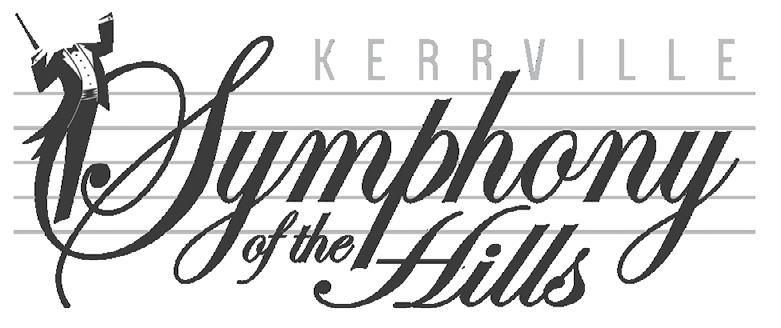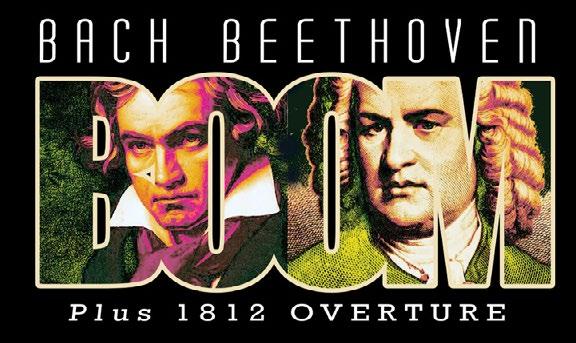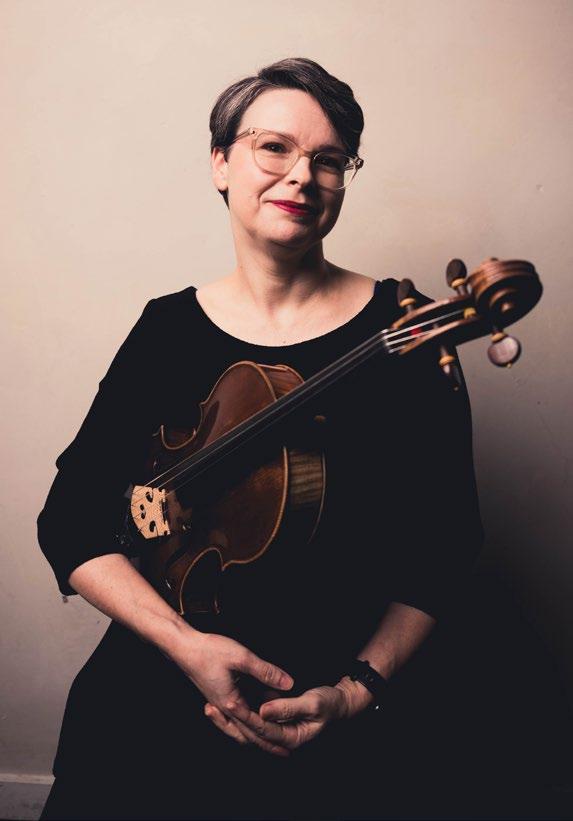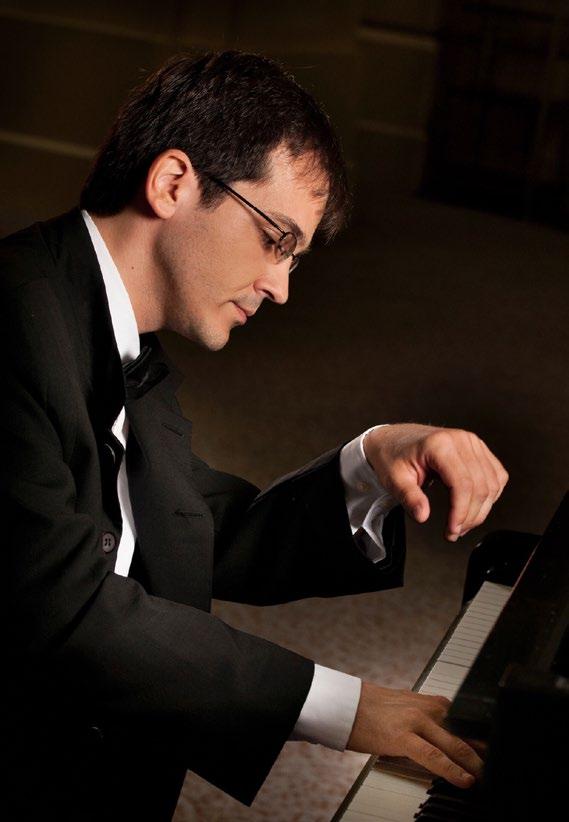





Camerata San Antonio presents chamber music of the highest caliber to our many and diverse classical musicloving audiences. We are equally committed to providing educational experiences for San Antonio’s students.








Camerata San Antonio presents chamber music of the highest caliber to our many and diverse classical musicloving audiences. We are equally committed to providing educational experiences for San Antonio’s students.

For centuries, string music has been a cornerstone of chamber music. Since our debut in 2003, Camerata has showcased over 500 works of chamber music, with a focus on the compelling combinations of strings and piano. We’re also fortunate to draw on occasion from the talented wind players of the San Antonio Symphony/ Philharmonic, enhancing our rich chamber music repertoire.
Over the past two decades, Camerata has enjoyed a stable roster of musicians, allowing us to delve deeply into string quartet literature. We have explored no fewer than 128 string quartets, with Beethoven’s standing at the pinnacle. His String Quartet No. 8, Op. 59 No. 2, will be our ninth foray into his monumental set of 16 quartets. One of our goals for future seasons is not only to introduce lesserknown works to our audience but also to complete our own Beethoven cycle.
A key aspect of our programming is to highlight underperformed, unheard, or neglected works from diverse sources. For those familiar with Camerata, you’ll recognize that each season includes pieces that fit this description. They all share one essential quality: they must be compelling music! Recently, our focus has increasingly shifted to spotlighting composers of color and women, many of whom have been unjustly overlooked. This season, we are excited to present six lesserknown or underplayed works alongside established repertoire, creating a vibrant and engaging musical experience that we believe you will thoroughly enjoy.
KEN FREUDIGMAN ARTISTIC DIRECTOR



String Quartet in G Minor, Op. 74 F .J . Haydn No. 3 “Rider” (1793) (1732-1809)
Allegro
Largo assai
Menuet and Trio
Finale: Allegro con brio
String Quartet No. 1 C .-T . Perkinson “Calvary” (1956) (1932-2004)
Allegro
Adagio
Allegro vivace
String Quartet in E Minor, L .v . Beethoven Op. 59 No. 2 (1805) (1770-1827)
Allegro
Molto adagio. Si tratta questo pezzo con molto di sentimento
Allegretto
Finale: Presto
Matthew Zerweck, violin
Laura Scalzo, violin
Emily Freudigman, viola
Ken Freudigman, cello
September 6, 2024
Friday at 4:00pm
Kerrville First
Presbyterian Church
September 7, 2024
Saturday at 3:00pm
Episcopal Church of the Holy Spirit (NW SA)
September 8, 2024
Sunday at 2:00pm
Christ Episcopal Church
String Quartet in G Minor, Opus 74, No. 3 “Rider” (1793)
The Quartet in G Minor, the last of the Op. 74 set, has long been popular with audiences. The energy and galloping rhythms of its outer movements have earned it the nickname “Rider” (sometimes “The Horseman”–neither originated with Haydn). With the galloping theme of the last movement of the Beethoven Op. 59, No. 2 later in this program, we seem to have a horse theme here!!
This quartet is distinguished by unusual key relationships and an expressive slow movement. The energy of the opening Allegro, complete with chirping grace notes, helped gain the quartet its nicknames, but the true first theme rises somberly out of the lower voices after a lengthy rest with dark aura about it. Soon after, a second idea waltzes agreeably in the first violin as the second violin accompanies with a shower of triplets in the key in G major as if to bring light into the darkness of the opening.
The second movement Adagio is a masterwork of deep emotion, some even hearing premonitions of Beethoven here. The unexpected key of E major gives it a surprising sound, a sonority enhanced by Haydn’s rich harmonies. The movement is in ABA form, and the middle–which moves to equally unexpected E minor–is unusually expressive. It is a measure of Haydn’s craftsmanship that this center section grows out of an inversion of the Largo theme; the reappearance of that original theme is treated to florid decoration by the first violin.
The Menuetto Moves along gracefully in G major and is paired with a darker trio in G minor. Haydn is often his most humorous and congenial in these movements and one cannot help but smile at the beautiful simplicity.
Haydn’s unusual marking for the finale–Allegro con brio (Fast with fire) - is the key here. This brilliant sonata form movement rips along broodingly on a main idea full of off-the-beat accents and dynamic contrasts. A graceful second idea provides nice relief, and the music sails home on a virtuoso part for the first violinist.
Camerata has performed eight other works by Haydn including the String Quartets Op. 77 No. 2 (2005), Op. 76 No.1 (2017), Op. 76 No.2 “Fifths” (2016), Op. 76 No.3 Emperor” (2021), Op. 76 no. 6 (2022), Piano Trio No 39 “Gypsy” (2012), Piano Trio No 28 “London” (2016), Flute Trios (2004).
Perkinson is one of the lesser heard voices that we are spotlighting this season. For more biographical information about this remarkable composer, scan the QR code with the camera on your phone.

Perkinson composed his Quartet No. 1 in 1956 at the age of 23. The quartet marks one of the first times Perkinson presents an explicit use of themes on an AfricanAmerican tradition: the composer acknowledges in the title that the quartet is “based on ‘Calvary’ (Negro spiritual).” Perkinson was familiar with the spiritual from church services but cautioned, “When I sat down to write this string quartet, I was not trying to write something black; I was just writing out of my experience.” The spiritual provides the basis for the melody of the first movement, although transformed to the syncopated and angular style characteristic of Perkinson’s compositions from this period. The movement is generated through the development and transformation of the Calvary melody, providing a rich source of motives and intervals for Perkinson’s counterpoint. If the spiritual tune is present in the second and third movements, it is heavily disguised. Both movements — the second is slow and expressive while the third (a rondo) is more agitated — feature striking alternations of homophonic passages with precise counterpoint and voice transfers. Listen for themes from the preceding movements to return in the middle of the last movement.
Camerata has also performed Perkinson’s Lamentations for solo cello (2022) and his Movement for String Trio (2024).
String Quartet in E minor, Op.59 No. 2 (1805)
In many ways the string quartets are where Beethoven experimented most freely, pushing boundaries of form and harmony, reshaping his artistic direction and leaving an indelible mark on the future of classical music. With the middle period Op. 59 “Razumovsky” quartets, Beethoven is experimenting with not only form but with scope defined by its grand size.
The more congenial conversations found in the quartets of Haydn, Mozart and even Beethoven’s earlier Op 18 quartets here give way to a monumental form of symphonic proportions. The Op. 59 quartets were written in 1805-6, a full four years after his previous quartet set, the revolutionary but still mostly Classical in style, Op. 18. The Op. 59 quartets introduce a whole new level of complexity, with intricate counterpoint and bold harmonic progressions. Beethoven’s symphonic approach
to the use of the instruments of the quartet creates a canvas that feels emotionally limitless. Other works from this period are the Symphonies No. 3-8, the Violin Concerto, Piano Concertos No. 4 and No. 5 “Emperor,” and my personal favorite, the Third Cello Sonata.
The Quartet in E Minor, Op.59 No.2 is a work wrought with tension and emotional depth, and one has the sense that this is “big music” from the outset. The first movement opens with two declamatory chords, silence; a brooding gesture in E minor wanders up to F major, and then we are off in the main body of the work. Beethoven, just like he did in the Eroica Symphony written three years earlier with its two declamatory chords and silence, is continuing to tell the world that he is taking music in a new direction.
Clocking in at just over 12 minutes, the Adagio is even more massive in conception than the expansive first movement. An expressive hymn tune in E Minor opens the movement, a kind of home base from which Beethoven will wander far afield. We’ll hear the hymn’s rhythmic and melodic shape distantly echoed, sometimes buried deep in the musical texture and harmonically far away from its home key, all throughout the movement, evoking a wide spectrum of emotion. Beethoven’s slow movements are the emotional center of his universe. Each and every time we study and perform one of these movements I am astounded by his creativity and understanding of what it is to be human.
The final two movements are decidedly – and perhaps intentionally – concise by comparison with the opening pair. A lightly tripping, dancelike Allegretto alternates with a Trio in which Beethoven honors the request of his patron who commissioned the Op. 59 quartets, The Russian Count Razumovsky, to include Russian themes in the quartets. Folk song collides with strict counterpoint in the guise of a fugue using all four voices of the quartet. The fugue quickly dissolves into a characteristically obsessive working over of one small snippet from the Russian tune.
The last movement returns to the symphonic flavor of the opening allegro. The shortest of the four movements balances the massive scope of the first movement. Its expected sonata-rondo form starts in the “wrong” key of C major and unleashes the four players of the quartet like the four horsemen of the apocalypse. The music drives forward with fiery intensity and the possibility of transformation. It is Beethoven at his best, challenging the players with go-for-broke passage work.
Camerata has performed quartets Op.18 No.1 (2020), Op.18 no.2 (2021), Op.18 No.3 (2015), Op. 59 No.1(2018), Op. 59 No.3(2016), Op. 74(2023), Op. 95(2018), Op. 127(2018), Op. 130 (2017), Op.133 (2017), plus several chamber works for other instrumentations - a total of 32 works.
Notes by Ken Freudigman 2024


“World Class Symphonic Music for the Texas Hill Country”

Glory Hallelujah–Dec 5
Bringing together in music the wonderful exclamation of the words “gloria!” and “hallelujah!”
Beethoven–Rutter–Guaraldi–Anderson–Sing-Along Carols

BOOM!–Feb 27
Inspired by the symphonic world’s desire for music that is bigger and more dramatic!
Beethoven–Bach–Mahler–Tchaikovsky
Bolero–Oct 10
Thrilling music by the world’s greatest composers of Spanish music! Villa Lobos–Rodrigo–RimskyKorsakov–Ravel

POPS–Jan 4
Devoted to the great music written about life’s greatest journeys! Handel–Gilbert & Sullivan–Horner–Back To The Future–Star Trek


Notturno for Piano Trio, F . Schubert Op. 148 (1827) (1797-1828)
Piano Trio in A Minor, M . Weinberg Op. 24 (1945) (1919-1996)
Prelude and Aria: Larghetto
Toccata: Allegro
Poem: Moderato
Finale: Allegro moderato
Soir-Matin, Op 76 (1907) M . Bonis
Soir (1858-1937) Matin
Piano Trio No. 3 in C minor, J . Brahms Op. 101 (1886) (1833-1897)
Allegro energico Presto non assai
Andante grazioso
Finale: Allegro molto

Matthew Zerweck, violin
Ken Freudigman, cello
Viktor Valkov, piano
October 4, 2024
Friday at 4:00pm
Kerrville First
Presbyterian Church
October 5, 2024*
Saturday at 3:00pm
Episcopal Church of the Holy Spirit (NW SA)
October 6, 2024*
Sunday at 2:00pm
Christ Episcopal Church
Notturno For Piano Trio Op. 148 (1827)
This substantial but relatively neglected piece has much in common with the sublime slow movements of both Schubert’s String Quintet in C major D. 956, and his Piano Trio No. 1 in B-flat, D 898. Its main thematic idea has a characteristic sublime peace and contentment. A contrasting middle section introduces more motion and pathos before settling back into the opening material, now transformed with the use of pizzicato in the strings and arpeggiated figures in the piano.
Camerata has performed the Octet in F Major, D. 803 (2003), String Quintet D. 956 (2004), Piano Quintet D. 667 “The Trout” (2005), String Trio in B flat Major D.581 (2006), Violin Sonata in A Major D. 574 (2010), Quartettsatz (2013), String Quartet No 14, D.810 “Death and the Maiden” (2017 ), String Quartet in A minor D.804 (2022).
Piano Trio in A Minor Op. 24 (1945)
For more biographical information about this remarkable composer, scan the QR code with the camera on your phone.

Mieczysław Weinberg (1919-1996), a Polish-born Soviet composer, is celebrated for the emotional depth, complexity, and profound sense of tragedy that permeate his music. His masterpiece, the Piano Trio in A Minor, Op. 24, was composed in 1945 and reflects the turbulent era in which it was created.
Weinberg’s life was marked by immense hardship. By the time of this Piano Trio, he had endured the horrors of World War II and lost his family in the Holocaust. After 1945, he would face ongoing struggles under the oppressive Soviet regime. These experiences deeply influenced his music, which often conveys a sense of melancholy, mourning, and defiance.
The Piano Trio, Op. 24, modeled after Shostakovich’s Piano Trio No. 2 (1944), written just the year before, encapsulates the intensity of these emotions.
The work is structured in four movements, beginning with an exuberant, colossal folk-like theme that is exchanged in a dynamic tug-of-war between the strings and the piano, ultimately leading to a solitary, lyrical melody. The second movement features a driving toccata with a manic, irregular rhythm, evoking the relentless and inhumanly mechanical essence of a war machine.
The third movement (called Poem), serves as the emotional core of the trio. The piano wanders alone seeking solace in an uncertain world. Folk-like melodies shift from the cello to the violin, enriched by intricate 20th-century counterpoint that conveys profound emotional depth. If we put this work into the historical context of late WW2 with his uncertainty of his family and future it makes it all the more poetic as if he’s searching for meaning.
The finale resumes the theme of the Poem but is soon disrupted by the frenetic pace of the violin. This leads into a fugue that portrays the relentless progression of conflict. Much like the toccata, the music builds to an almost unbearable tension, reminiscent of the finale of Shostakovich’s trio. However, here the tension eventually dissolves into a lighter dance and concludes with a quiet, gentle, and somewhat uncertain ending.
Camerata has performed Weinberg’s Piano Quintet, Op. 18 (2015) and Capriccio for String Quartet, Op. 11 (2019).
Soir-Matin Op. 76 (1907)
Mel Bonis is one of the less heard voices that we are spotlighting this season. For more biographical information on this remarkable composer, scan the QR code with the camera on your phone.

Soir- Matin (Evening and Morning), composed in 1907, presents two movements in two contrasting moods. It presents two different moods. Soir (Evening) evokes a mostly calm, tranquil evening atmosphere.
In contrast, Matin (Morning), though quiet, paints a restless awakening, characterized by sparkling running notes in the piano. It is full of chromaticism and unusual modulations that push but to not pass the boundaries of traditional tonality.
This is the first work by Mel Bonis Camerata has performed.
Brahms’s third piano trio, (Camerata performed the First Trio Op. 8 in 2013 and 2024), is arguably the least known of his three trios but stands out as a striking example of his later, more concise style. Unlike the expansive and thematically rich first trio (Op. 8), this work is marked by a strict formal approach and a tight compositional structure. Brahms’s intent is clear from the start: he aims for a tightly wrapped piece, even omitting the traditional exposition repeat. The prevailing minor key imparts an air of unease and defiance, and the second theme, reminiscent of the Viennese waltz he cherished, never quite achieves a free, dancing quality.
The second movement, an intermezzo, remains in the minor key and conveys a hypnotic effect of restrained joy, devoid of any overt emotional outbursts.
The third movement revisits a more traditional Brahmsian landscape, echoing the dreamy and comforting solo piano intermezzos. However, its unconventional alternating time signature creates a lopsided and unsettled 7/4 feel. Interestingly, Brahms’s summer of 1886 - during which he composed the trio you hear todaywas dominated by works for violin,cello and piano, and the string writing in this movement serves as a precursor to his subsequent Double Concerto Op. 102 for Violin and Cello.
The finale is rhythmically intense. Here, Brahms’s focus on rhythmic variety and meter becomes evident. Throughout his career, Brahms pushed the boundaries of harmonic movement, rhythm, and meter, often bending them to their limits while still maintaining his traditional compositional approach. In this work, he continues to explore and challenge these elements, paving the way for future composers whose tonal and rhythmic centers would become even more ambiguous. Brahms’s progressive tendencies and his influence on the direction of music are significant, setting him apart from other late Romantic composers.
Johannes Brahms remains a perennial favorite of Camerata; we have performed 25 of his works to date.
Notes by Ken Freudigman 2024

Emily Freudigman is Co-Founder of Camerata San Antonio. Emily holds degrees in viola performance from Southern Methodist University, the Peabody Conservatory, and the University of Michigan and has been a Fellow at the Tanglewood Music Center and the Aspen Music Festival and School. She has studied chamber music with members of the Juilliard, Muir, Concord and Tokyo String Quartets, and she has performed with the Grand Rapids, Maryland, Fort Worth and Boston Symphony Orchestras. Emily was the Assistant Principal Viola of the San Antonio Symphony from 2002 to 2019. She maintains an active viola studio in San Antonio –her students perform in the Texas All-State orchestras, attend prestigious summer music camps, including the Eastern and Killington Music Festivals and Interlochen Center for the Arts and have gone on to study at the Cleveland Institute of Music and Peabody Conservatory of Music.
Emily can be heard on Quartets, Trésors Musicaux, Bach Reflections, and Romantic Resonances this season .
Kenneth Freudigman, the Co-Founder and Artistic Director of Grammy Nominated Camerata San Antonio, has an extensive musical background. He served as the Principal Cello of the San Antonio Symphony from 2004 to 2022 and currently holds the same role in the new San Antonio Philharmonic. With a degree from the Eastman School of Music, he has studied under renowned teachers such as Steven Doane, Alan Harris, and Crispin Campbell.
In addition to his work in San Antonio, Mr. Freudigman has performed with esteemed orchestras like the Atlanta Symphony, Mexico City Philharmonic, Grand Rapids Symphony, Virginia Symphony, and the New World Symphony, among others. His reputation as a cello pedagogue is highly regarded, and he also serves as the Conductor of Youth Orchestras of San Antonio Symphony and Concertino Orchestras.
For the past 30 years, Mr. Freudigman has maintained a successful studio, tailoring lessons to meet the unique goals and challenges of each student. His teaching philosophy revolves around building a solid foundation through the fundamentals of string playing. He assesses the developmental stage of new students and guides them towards success.
Over the years, Mr. Freudigman’s students have achieved notable accomplishments. Many have secured positions in prestigious Texas region and All-State ensembles, while others have attended renowned summer music festivals such as Interlochen, Sewanee, Sphinx Academy, Tanglewood, Bowdoin, Heifetz Academy, and The Perlman Institute. Some of his students have also participated in major music competitions, including Ronald Sachs, Sphinx, Stulberg, Ann Arbor Young Artist, Tchaikovsky Young Musician, and Hudson Valley, with several winning or placing in these competitions.
His students have received various awards, such as the From the Top Jack Cooke Kent Young Artist Award, Texas Commission on the Arts Young Masters Recipient Sphinx Power Grant, Paul and Daisy Soros Fellowship and 3rd Place Laureate at the Sphinx Competition.
Furthermore, Mr. Freudigman has guided his students to gain admission to renowned institutions such as Curtis, Colburn, Eastman, Juilliard, Rice, University of Michigan, Indiana University, Oberlin, Northwestern, New England Conservatory, University of Texas at Austin, Baylor University, University of North Texas, Texas Tech University, and DePaul University. Many of these students have gone on to successful careers in music, becoming faculty members at universities or performing as soloists and chamber musicians.
Ken can be heard on Quartets, Longing, Trésors Musicaux, Bach Reflections, and Romantic Resonances this season .


Originally from Long Island, New York, Laura Scalzo’s love of the violin was sparked by the great violinist, Itzhak Perlman, when she heard him play on “Sesame Street.” She began lessons at the age of 4 and has been playing ever since. She holds degrees from Temple University (BA), the University of Delaware (MM), and was a Tanglewood fellow for two summers. Her primary teachers have included William dePasquale, Xiang Gao, and Ellen dePasquale.
Ms. Scalzo was a member of the first violin section of the San Antonio Symphony from 2011-2021, and served as Assistant Concertmaster of the Mid-Texas Symphony until 2024. Before moving to San Antonio, she was a tenured member of the Delaware and Allentown Symphonies. She has performed concertos with the MidTexas Symphony and the Wilmington Community Orchestra.
A passionate chamber music lover, Ms. Scalzo has worked with various ensembles including the Serafin String Quartet, and the Mid-Texas Chamber Players. She has performed with Camerata San Antonio since 2023.
Ms. Scalzo is an enthusiastic teacher and maintains a robust private studio. She also has many interests outside of music and in 2022 she founded a landscape design company, Roots in the City (www.rootsinthecitytx.com), which specializes in organic vegetable and native plant gardening.
Laura can be heard on Quartets, Trésors Musicaux, The Camerata Recital, and Romantic Resonances this season .
Winner of the 2015 Astral Artists National Auditions, and Gold medalist at the 2012 New Orleans International Piano Competition, Viktor Valkov has been highly acclaimed by the critics as “lion of the keyboard” and “sensational”. Among numerous chamber music and solo appearances, during the last few concert seasons Mr.Valkov also performed with the San Antonio Symphony Orchestra, Springfield Symphony Ortchestra, Louisiana Philharmonic Orchestra, Baton Rouge Symphony Orchestra, Acadiana Symphony Orchestra, Salt Lake Symphony, and West Virginia Symphony Orchestra.
Since 2002 Valkov has given a number of recitals in USA, Japan, China, Haiti, England, Germany, Italy, Norway, Greece, Bulgaria, and Macedonia. In Bulgaria, Viktor Valkov appeared in performances with most of the major orchestras and at most of the important music festivals. In 2003, he received an invitation from the New Symphony Orchestra, and conductor Rossen Milanov, to perform Dimitar Nenov’s Grande Piano Concerto. Thus he became the fifth pianist to perform that
concerto and the only one to do the entire version. In 2007, Mr.Valkov made his debut with the Sofia Philharmonic Orchestra.
Mr.Valkov’s concert activities reflect a vast interest in the chamber music repertoire, as well as lesser known piano music. He frequently performs with the Bulgarian cellist, Lachezar Kostov, in a cello and piano duo. Both being deeply interested in broadening the repertoire for that medium, they often include in their programs composers like Kabalevsky, Roslavetz, Schnittke, Saint-Saens (the Second cello Sonata), and others. Their close friendship and professional collaboration began in 2000.
In 2009, the Kostov-Valkov Duo gave their Carnegie Hall debut at Zankel Hall. In 2011 they won the Liszt-Garisson International Competition, where they were awarded First Prize, the overall Liszt Prize as well as all the special prizes in the collaborative artists category.
As a solo performer one of Mr.Valkov’s latest projects featured Busoni’s Fantasia Contrappuntistica, Beethoven’s Hammerklavier Sonata, and Mussorgsky’s Pictures at an Exhibition as the focal point of his concert programs. During the 20112012 Viktor Valkov presented a program of music from the 1600’s including composers like Froberger, L Couperin, Frescobaldi, Buxtehude and selections from the Fitzwilliam Virginal Book.
Mr.Valkov has made a number of recordings for the Bulgarian National Radio archive, many of which have been broadcast. He has also recorded for Bulgarian National Television and Macedonian Radio and Television. Since 2008 he has recorded albums for a number of labels including NAXOS, GrandPiano, Toccata Classics, Albany Records, Summit Records, Parma Recordings, Bridge Records, and Acis


Records. Viktor Valkov is currently an Associate Professor of Piano at the University of Utah in Salt Lake City.
Viktor can be heard on Longing, Trésors Musicaux, The Camerata Recital, and Romantic Resonances this season .

Matthew Zerweck (matthewzerweck.com) began his music studies at age 5, after watching Itzhak Perlman perform on the children’s television show, “Sesame Street.” After studying with several esteemed artist teachers, he entered the Eastman School of Music. He earned degrees from the Eastman School of Music (BM, MM, Performers’ Certificate), where he served as teaching assistant to the world renowned violinist and teacher, Charles Castleman, and was awarded the John Celentano award for excellence in chamber music.
Formerly the Assistant Concertmaster of the San Antonio Symphony (2008-2012), Matthew teaches violin full time in San Antonio. During the 2023-24 Season, his students won all of the San Antonio contests: The YOSA Concerto Competition, 1st, 2nd, and 3rd places in the Inspired by KPAC Competition, and participation in the SA Phil masterclasses. They led both the Region 12 Orchestra and the YOSA Philharmonic as Concertmasters. The three San Antonio violin students admitted to the prestigious TMEA All-State orchestra were all from the Zerweck Studio. His students also premiered the works of local San Antonio composers at the Doseum as part of “Made in SA IX.” Matthew’s graduating seniors will attend Eastman, CIM, HEMU in Switzerland, and the Royal Conservatory of Music in the Fall of 2024.
In his spare time, Matthew enjoys family time with his wife Nancy, and two children, Charlie and Amelia.
Matthew can be heard on Quartets, Longing, Bach Reflections, and Romantic Resonances this season .



SCAN THE QR CODE TO JOIN OUR EMAIL LIST
Stay up-to-date on all Camerata San Antonio events. Be one of the first to find out what we’ve planned for the season!







Introducing the Texas Violin Shop: Your Go-To Family-Owned Business in San Antonio. Come and experience our workshop, where we prioritize providing each customer with a positive and unique experience. From your very first student instrument to upgrading to a professional model, we've got you covered. Our selection of products is handpicked to meet our rigorous standards and cater to every budget.
At our company, we value community involvement and take pride in supporting local events and organizations that promote the arts. We strongly believe in the power of musi c to bring people together and are thrilled to be an active participant in San Antonio's thriving music scene.

Meet Samantha - a talented luthier and the owner of the only violin shop in San Antonio that creates handmade instruments in house.



JENNIFER GARCIA-HETTINGER PRESIDENT
KAY LORRAINE JOHNSON VICE PRESIDENT
JULIE KENFIELD TREASURER
LISA FUENTES SECRETARY
SARA HAMILTON
SARA PETERS



FRIDAYS
KERRVILLE FIRST PRESBYTERIAN CHURCH
800 Jefferson St Kerrville, TX 78028
SATURDAYS
EPISCOPAL CHURCH OF THE HOLY SPIRIT 11093 Bandera Rd San Antonio, TX 78250
SUNDAYS
CHRIST EPISCOPAL CHURCH
510 Belknap Pl San Antonio, TX 78212
Camerata San Antonio Artistic Director Kenneth Freudigman found clay in February of 2019 and has become obsessed with forms and glazes! When he’s not performing, teaching, conducting, biking, or running, you can find him making a mess in his ceramics studio!!



• WEBSITE: PrimocelloCeramics com
• INSTAGRAM: @primocello_ceramics
• FACEBOOK: www.facebook.com/PrimocelloCeramics



A Grant from the City of San Antonio Department of Arts and Culture
Dr. & Mrs. Thomas R. Hamilton
Sponsors of violinist
Matthew Zerweck
Sheila Swartzman
Sponsor of violinist Laura Scalzo and in memory of Kenneth Bloom
Didi & Alan Weinblatt
Sponsors of pianist Viktor Valkov
Lynda and Steve Ables
Dr. Donald K. Burda
Linda & Edgar Duncan
Ruth Ann Edney
Dr. & Mrs. Charles Goodhue
Barbara Kyse
Janna Spurlock
Watt Charitable Giving Fund
BENEFACTORS CIRCLE
Verna Benham
Liz Davenport
Joe & Toni Murgo
In memory of Kenneth Bloom
Wayne & Barbara Shore
Connie & Bruce Story
Allegra Marketing Print Mail
Margaret Hager
Ann & Carl Leafstedt
In blessed memory of Scott Baird
Mo & Brigitte Saidi
Barbara Stover
Jacqueline Claunch
Alan Cutler
Freda Flax
Sharon Hellman-Freiberg
Carol Frohlich
Suzanne Kasanoff
Julie Kenfield & Guy Clumpner
Lynne Noriskin
Helen Ridgway
Kathy & Robert Rothen
Ann Springer
Dr. Ana M. Valadez
John Woodworth
Robin Allen
Helga Anderson
Scott Bellair
Jim Bridges
Diane Burchers
William Castleman
Bernice Davis
Yvonne Feinleib
Althea Fowler
Beverly Fulton
William Heffner
Chris Lorenz
Hannah Margolis
Carole & Carl McCauley
Mimi McMillen
Janine Mejia-Diaz
Nancy & James Roberts
Tonja & Tim Rose
Kim Smith
Marilyn Sommer
John Thompson
Lynette Wedig
Marcia Weser
Gillian Wiggins
Morgan Williams
Alice Witterman
Due to our printing schedule, gifts received after August 20, 2024, will be recognized in our Nov/Jan program. Up-to-date donor listings may be found online at www .cameratasa .org/support.
To donate, please visit our website or send a check payable to Camerata San Antonio to: 11618 Raindrop Dr . San Antonio TX 78216
Donations to Camerata San Antonio are tax deductible to the extent allowed by law. Federal Tax ID #56-2382185
The Camerata Compadres
Our Wonderful Volunteer Corps
BlackStone Studio
Barbara Holland
Bob Catlin
Christ Episcopal Church
Bishop Gary Lillibridge
INTERIM RECTOR
Josh Benninger
DIRECTOR OF MUSIC
Jennifer Holloway
ASSISTANT DIRECTOR OF MUSIC
CEC Friends of Music
Episcopal Church of the Holy Spirit
Rev. Jason T. Roberts
RECTOR
Jen Bourland
CHURCH ADMINISTRATOR
Gary Mabry
MUSIC MINISTER
Floresent Marketing
Alex Flores
Leon Camacho
Kerrville First Presbyterian Church
Rev. Dr. Jack Haberer
INTERIM PASTOR
Seth Lafler
DIRECTOR OF CHORAL MUSIC
Sabrina Adrian
ORGANIST
Worship Committee
National Charity League, Inc
Alamo Chapter
Traveling Blender
Sandy Weatherford
Texas Public Radio KPAC/KSTX
Barry Brake
Nathan Cone

